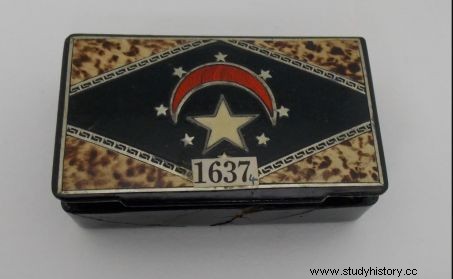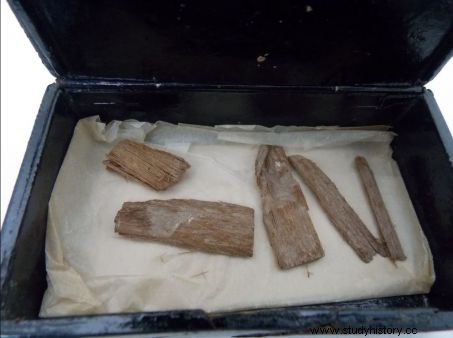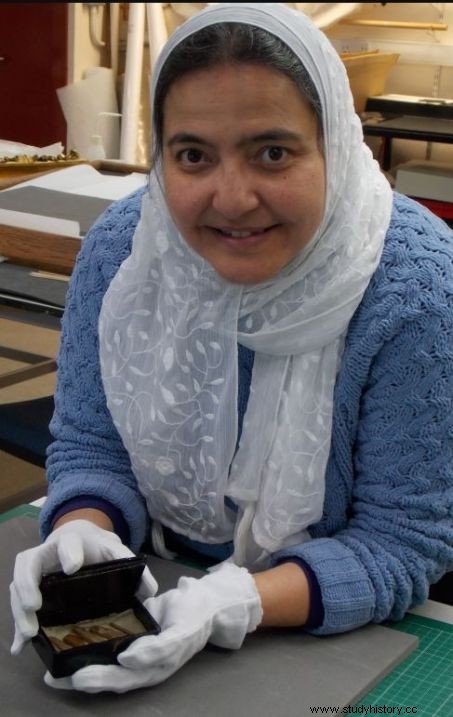This cedar wood fragment is one of only three objects found inside the pyramid in 1872 by British archaeologist Waynman Dixon. It was found in Scotland, in a cigar box!

The pyramids of Cheops, Kephren and Mekerinos, in Giza, Egypt, on October 21, 2020.
More than seventy years after going missing, 5,000-year-old wooden fragments from the Great Pyramid of Giza in Egypt have been fortuitously discovered in a cigar box at the University of Aberdeen in Scotland, an official has announced. press release from the University of Aberdeen (Scotland) Wednesday, December 16, 2020. The cedar wood fragment is one of only three objects found inside the pyramid in 1872 by British archaeologist Waynman Dixon (1844–1930). Discovered at the time inside the "Queen's Chamber", these objects were known as "Dixon's Relics".

The cigar box that contained the cedar wood fragments. Credits:University of Aberdeen
A long sought-after artifact
The other two artefacts unearthed at the time - a dolerite sphere 7 cm in diameter and a bronze hook likely used during the construction of the monument - are kept in the British Museum, but the trace of the wooden fragments had been lost for over 70 years. In 2001, a lead had emerged:the fragment of wood (at the time a 12 cm piece) could have been donated to the University of Aberdeen in Scotland, but it could not be found.

The cedar wood fragments found in the pyramid of Cheops by Waynman Dixon, in 1872. Credits:University of Aberdeen.
Late last year, an Egyptian conservation assistant reviewing the Asian collection, Abeer Eladany, came across a cigar box emblazoned with the ancient Egyptian flag, only to realize that the piece of wood it contained was in made the lost artifact, now reduced to several pieces.
"Surprise" and "revelation"

Abeer Eladany, in the premises of the University of Aberdeen (Scotland). Credits:University of Aberdeen.
"When I looked at the numbers in the Egypt register, I immediately knew what it was , said the archaeologist. I've worked on excavations in Egypt before, but I never imagined it would be here, in the northeast of Scotland, that I would find something so important to my heritage. own country" .
Recent analyzes have dated the wooden fragment between 3341 BC and 3094 BC, approximately 500 years before the construction of the pyramid. In the statement, Neil Curtis, Head of Museums and Special Collections at the University of Aberdeen, said:"The discovery of the missing Dixon relic was a surprise, but carbon dating was also a revelation".
